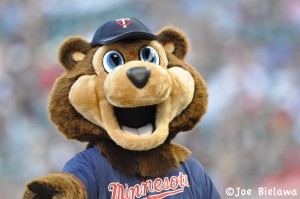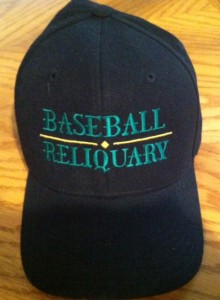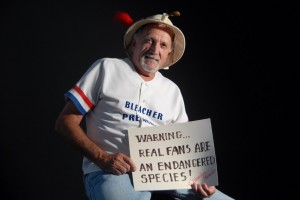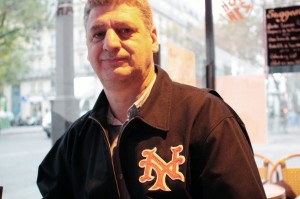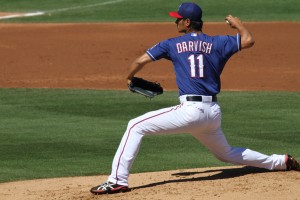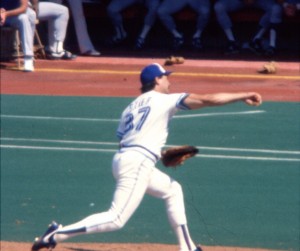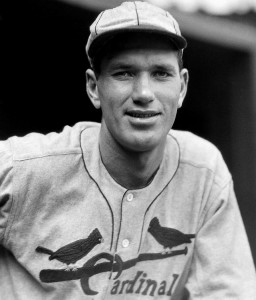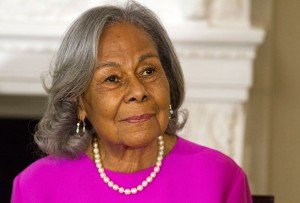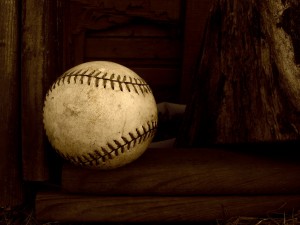Like most Minnesotans, I am looking forward to the 2014 All Star game (and all the related festivities) at Target Field. The anticipation led me to reflect on the previous All Star games hosted by our Twins – 1965 at Met Stadium (Bloomington) and 1985 at the Hubert H. Humphrey Metrodome (Minneapolis). I missed the 1965 game (serving in the Air Force overseas), but made it to the (less exciting) 1985 contest.
1965 ALL STAR GAME
The 1965 All Star Game drew 46,706 fans to Metropolitan Stadium and they got their money’s worth as the National League won 6-5, with Willie Mays scoring the winning run on a Ron Santo infield single in the seventh inning. Given the line-ups (see below), it’s surprising the game was so close. Going into the game, the two leagues had split the All Star contests evenly (17-17, with one tie). The NL win actually gave the senior circuit its first lead in the series – and, what a National League lineup the fans got to see in Minnesota that day (remember, no interleague play back then)! There were six future Hall of Famers in the NL starting nine alone. Here’s the game-opening line-up (future Hall of Famers in bold.)
Willie Mays (Giants) CF
Hank Aaron (Braves) RF
Willie Stargell (Pirates)
LF Richie Allen (Phillies) 3B
Joe Torre* (Braves) C
Ernie Banks (Cubs) 1B
Pete Rose (Reds) 2B
Maury Wills (Dodgers) SS
Juan Marichal (Giants) P
*Torre going into HOF as manager this year.
The NL players who came into the game off the bench weren’t bad either: Roberto Clemente (Pirates); Frank Robinson (Reds); Billy Williams (Cubs); Ron Santo (Cubs); Leo Cardenas (Reds); Cookie Rojas (Phillies).
The NL pitching staff was equally loaded. Marichal was relieved in order by: Jim Maloney (Reds); Don Drysdale (Dodgers); Sandy Koufax (Dodgers); Turk Farrell (Astros); and Bob Gibson (Cardinals).
On the AL side the lineup included two future HOFers, Brooks Robinson and the Twins’ own Harmon Killebrew. (Twins’ fans did get a treat that day. Not only did catcher Earl Battey join Killebrew in the starting line-up, but AL manager Al Lopez worked Twins Tony Oliva, Zoilo Versalles, Jimmie Hall and Mudcat Grant into the contest. The Twins, of course, were on their way to a 102-60 season and the AL pennant.) The AL starting nine looked like this:
Dick McAuliffe (Tigers) SS
Brooks Robinson (Orioles) 3B
Harmon Killebrew (Twins) 1B
Rocky Colavito (Indians) RF
Willie Horton (Tigers) LF
Felix Mantilla (Red Sox) 2B
Vic Davalillo (Indians) CF
Earl Battey (Twins) C
Milt Pappas (Orioles) P
Off the bench, the fans saw: Al Kaline (Tigers); Tony Oliva (Twins); Max Alvis (Indians); Joe Pepitone (Yankees); Bobby Richardson (Yankees); Zoilo Versalles (Twins); Mike Freehan (Tigers); and Jimmie Hall (Twins).
Following Pappas to the mound were: Mudcat Grant (Twins); Pete Richert (Senators); Sam McDowell (Indians); and Eddie Fisher (White Sox). A few in-game highlights:
- Willie Mays led off the first inning with a long homer to left center; and, later in the inning, Joe Torre hit a two-run shot to left (Willie Stargell scoring). It was, by the way, a bit of a homecoming for Mays. Minneapolis was his last stop on the way to the majors. Before his call-up in 1951, Mays played 35 games for the Minneapolis Milllers (AAA), hitting .477, with eight home runs, 30 RBI and five steals.
- The Twins’ Mudcat Grant relieved Milt Pappas to open the second, and the NL stretched the lead to 5-0 on a two-run homer by Stargell.
- Meanwhile, Juan Marichal threw three innings of scoreless, one-hit ball.
- With Jim Maloney on the mound, the AL came back with one run in the bottom of the fourth – on a Dick McAuliffe single, a walk to Harmon Killebrew and a run-scoring single by Rocky Colavito.
- The wheels came off for Maloney with two out and nobody on in the fifth. He walked the Twins’ Jimmie Hall, then gave up a two-run homer to Dick McAuliffe. Brooks Robinson followed with a single and Killebrew thrilled the crowd with a long and high homer to left center. With the game now tied at five, Don Drysdale came in and got Colavito on a grounder to second to end the inning.
- The only other scoring came in the top of the seventh, when Sam McDowell walked Mays, who moved to third on a single by Hank Aaron and scored (the go-ahead and winning run) on an infield hit by Ron Santo.
- Gibson threw the final two innings for the NL and had to work out of two tough jams. With two outs in the eighth, Zoilo Versalles (walk) on third and Mike Freehan on second (single), Gibson got Hall on a fly out to center. Then, after the Tony Oliva led off the ninth with a double (putting the tying run in scoring position), Gibson got Max Alvis to pop up an attempted bunt before striking out Killebrew and Joe Pepitone.
- Showing just how different the contest was: Mays, Aaron, Ernie Banks, Pete Rose, Killebrew and Willie Horton played the whole game.
- Overall, 16 future HOFers took the field during the game.
Juan Marichal’s three scoreless innings (just one hit) earned him MVP honors.
1985 ALL STAR GAME
I was among the 54,960 fans who packed the Hubert H. Humphrey Metrodome for the 1985 All Star Game. By this time, the NL had a 35-19-1 lead in the series, but the AL looked to have the more solid line-up this year. It was a great day to be a San Diego fan – five members of the starting line-up were Padres and seven Padres took the field that day. Here are the NL starters (future Hall of Famers in bold):
Tony Gwynn (Padres) LF
Tommy Herr (Cardinals) 2B
Steve Garvey (Padres) 1B
Dale Murphy (Braves) CF
Daryl Strawberry (Mets) RF
Graig Nettles (Padres) 3B
Terry Kennedy (Padres) C
Ozzie Smith (Cardinals) SS
Lamar Hoyt (Padres) P
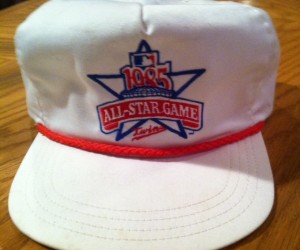 Players we saw coming in off the bench: Ryne Sandberg (Cubs); Jose Cruz (Astros); Tim Raines (Expos); Tony Pena (Pirates); Jack Clark (Cardinals); Willie McGee (Cardinals); Dave Parker (Reds); Tim Wallach (Expos); Ozzie Virgil (Phillies); Pete Rose (Reds); Glenn Wilson (Phillies); Garry Templeton (Padres).
Players we saw coming in off the bench: Ryne Sandberg (Cubs); Jose Cruz (Astros); Tim Raines (Expos); Tony Pena (Pirates); Jack Clark (Cardinals); Willie McGee (Cardinals); Dave Parker (Reds); Tim Wallach (Expos); Ozzie Virgil (Phillies); Pete Rose (Reds); Glenn Wilson (Phillies); Garry Templeton (Padres).
On the mound, Hoyt was followed by: Nolan Ryan (Astros); Fernando Valenzuela (Dodgers); Jeff Reardon (Expos): Goose Gossage (Padres).
Rooting for the home team AL, I was pleased to see a strong, veteran starting nine (seven future Hall of Famers). As a Twins’ fan, I was disappointed to see only Tom Brunansky on the AL squad. (The Twins were on their way to a 77-85 fourth-place finish.) The AL lineup:
Rickey Henderson (Yankees) CF
Lou Whitaker (Tigers) 2B
George Brett (Royals) 3B
Eddie Murray (Orioles) 1B
Cal Ripken, Jr. (Orioles) SS
Dave Winfield (Yankees) RF
Jim Rice (Red Sox) LF
Carlton Fisk (White Sox) C
Jack Morris (Tigers) P
Reserves who got into the game included: Paul Molitor (Brewers): Wade Boggs (Red Sox); Damaso Garcia (Blue Jays); Phil Bradley (Mariners): Tom Brunansky (Twins): Alan Trammel (Tigers): Ernie Whitt (Blue Jays): Gary Ward (Rangers): Rich Gedman (Red Sox); Harold Baines (White Sox); Cecil Cooper (Brewers): Don Mattingly (Yankees) 1B.
Following Morris to the hill (in order) were: Jimmy Key (Blue Jays) ; Bert Blyleven (Indians); Dave Steib (Blue Jays); Donnie Moore (Angels); Dan Petry (Tigers); and Willie Hernandez (Tigers).
Despite being played indoors and in a stadium often called the “Homer Dome,” the game itself was “homer-less” – with the NL topping the AL 6-1 and the NL hurlers allowing AL hitters just five singles. There weren’t many highlight (especially for AL fans), but here’s a few.
- After Jack Morris retired the NL in order in the top of the first, Rickey Henderson led off the bottom half with single, then – after a Lou Whitaker fly out – stole second and went to third on an errant throw. He then scored (an unearned run) on a George Brett sacrifice fly.
- The NL came back with a run in the second (off Morris) on a single by Daryl Strawberry, a stolen base and a single by Terry Kennedy.
- In the third, the NL knocked Morris out of the game (and took the lead for good) on a two-out/none-on double by Tommy Herr and a run-scoring single by Steve Garvey. Dale Murphy followed with a ground-rule double to left, then Strawberry drew a walk, before Jimmy Key came into get the final out on a Graig Nettles’ foul-ball pop-up.
- The NL added two more in the fifth – when Bert Blyleven hit Strawberry with a pitch, Tim Wallach doubled (with Strawberry holding at third) and Ozzie Virgil plated them both with a single.
- The scoring wrapped up in the top of the ninth, when Dan Petry walked Ryne Sandberg to open the inning, then loaded the bases with walks to Tim Raines and Jack Clark (sandwiched around a Tony Pena strikeout.) Willie Hernandez came in and gave up a two-run ground rule double to Willie McGee before getting out of the inning.
- Ozzie Smith and Rice played the whole game.
- Tom Brunansky came in to play RF in the seventh, and grounded to short (8th inning) in his only at bat.
- Overall, 14 future HOFers played in the game.
Winning pitcher Lamar Hoyt (three innings pitched, two hits, one unearned run) was the game’s MVP.
The AL did have a minor highlight. The 1985 All Star Game marked the first-ever official All Star Home Run Derby. That year, each league selected five players, who each got two turns at bat (five outs per turn, any swing not producing a home run counting as an out). That first HR Derby was won by the AL. Here are the totals:
AL – 17 HR
Jim Rice 4 HR
Eddie Murray 4
Carlton Fisk 4
Tom Brunansky 4
Cal Ripken. Jr. 1
NL – 16
Dave Parker 6
Dale Murphy 4
Steve Garvey 2
Ryne Sandberg 2
Jack Clark 2
